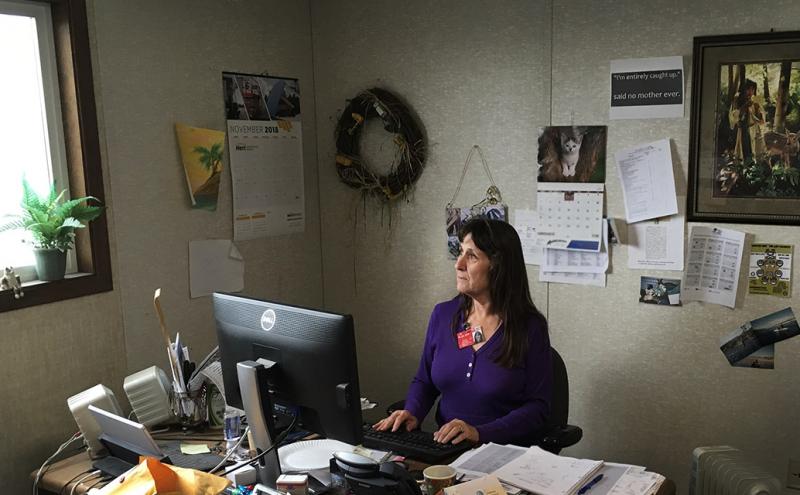
In celebration of Native American Heritage Month, our profile this month spotlights Michaela Hafner, Port Construction Services Administrative Assistant. Port Construction Services handles small scale remodeling and demolition work across Port properties, including Sea-Tac Airport. Michaela is also co-chair and active member for the Native American Committee, an employee resource group (ERG) dedicated to events and learning opportunities related to Native American Heritage.
By Hewan Mengistu
Tell us more about your role here?
I am an admin in Port Construction Services (PCS), and I work out in the field closely with our crew. I enter the crew’s times on each shift, schedule maintenance and repairs for vehicles and equipment to minimize impact to projects, and ensure they complete learning requirements as outlined in our learning management system (LMS). I also make many purchases to help keep our projects timely. In the past, I have even had to take my Purchasing card with me to ride along with a Teamster to the dump.
I am the “office mom”—whatever needs to get done, I get done. I play devil’s advocate a lot, and I like to make sure people stay shaken up. Because PCS has people located across many job sites, we don’t always get to meet everyone in our own department. So sometimes, if our whole department is getting together for a safety or project event, I might do assigned seating. Most people find this fun and interesting.
What’s your favorite part of your job?
My favorite thing about the Port is that there is always so much change that it feels like a new job every day. I love watching the dynamics of groups of different people. You do not get burned out at the Port. My job is always evolving based on changes at the Port and what needs to be done next.
What are some of your favorite things you have gotten to do in your role?
I like that the Port has so many ways to connect with other people in other departments. I think the All Services at the Port (ASAP) meetings are important because it is good to know who the admins in other departments are. You can get an education here that you do not even realize you are getting, like the events the Employee Resource Groups (ERGs) put on.
Are you involved with any ERGs?
Yes, I am co-chair of the Native American Committee with Anita Simmons, Administrative Assistant. It helps educate people that Native American culture is not the stereotypes that are on television and in movies. There is diversity within the group too. Some people were raised to embrace their culture, while others were taught to deny their heritage. There are a lot of important things we are not taught in American History. As big as the Port is, I think the ERGs give it a sense of closeness. The ERGs can help communities connect with the Port and the Port connect with communities.
Tell us more about you, have you lived your whole life in Seattle?
I moved to Seattle from South Dakota in 1980. It is very hard to make a living in South Dakota. The Seattle area has opportunities. It is a bigger environment, and there is much more to do in a big city than a small town. I knew that the Port of Seattle would always stay in Seattle and I wanted to work at a place that [I knew would] always be here.
When you’re not here at the port, what do you like to do in your free time?
I have a small hobby farm on about 10 acres in Port Orchard. Every night I come home from work, it feels like I am on vacation. I grew up on a ranch, so I have always had to have a connection with the Earth. I have a lifetime commitment to my pets. All my chickens are different breeds. They all lay different color eggs and I can tell who is laying what, yes each chicken has a name. I have chickens, dogs, and a horse, among other animals. I get up at 3 in the morning, so I take some time in the morning, and about 2 hours after work when doing chores and feeding everybody. We really recycle too. Really no food item hits the garbage. Crackers, cereal, left over veggies go to the chickens. The horse loves the corn husks and cobs and even melon rinds. The dog will select some leftover meat. Then the rest is compost. Even the empty feedbags get reused!

